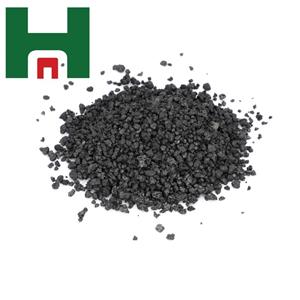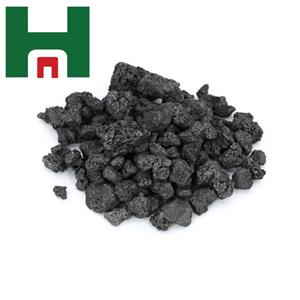Carbonization principle of carburizing agent
The carburizing agent usually used for cast iron is carbonaceous material, and its main component is carbon. Carbonaceous materials are mainly graphite and amorphous carbon. Graphite is a hexagonal crystal. Carbon atoms in graphite crystals are layered. In the same layer, the covalent bond between atoms is very strong and the bonding force is very strong. Combined, its bonding strength is very weak. Therefore, graphite is easy to layer and has very low strength. Because graphite crystal has such structural characteristics, it tends to grow into sheet structure when it grows in molten iron. Amorphous carbon is also a hexagonal flake crystal. The difference between amorphous carbon and graphite is that the hexagonal arrangement is incomplete and the interlayer distance is slightly larger. The following is the carbonization principle of carburizing agent:
The melting temperature of carbon in the elemental form of carburizer is 3727 ℃ and cannot be melted at the temperature of molten iron. Therefore, the carbon in the carburizing agent is mainly dissolved in molten iron through dissolution and diffusion. When the WC of molten iron is 2.1%, the graphite in graphite carburizer can be directly dissolved in molten iron. Except that carbon gradually diffuses and dissolves in molten iron with time, there is basically no direct phenomenon of non graphite carbon. Therefore, for the carbonization of synthetic cast iron smelting in electric furnace, the carbonization rate of graphite carbonization is significantly higher than that of non graphite carburizing agent.
The results show that the dissolution of carbon in molten iron is affected by the transfer of liquid boundary layer on the surface of solid particles. The results obtained with coke and coal particles were compared with those obtained with graphite. It was found that the diffusion rate of graphite carburizer in molten iron was significantly faster than that of coke and coal particles. Through the observation of partially dissolved coke and coal particles by electron microscope, it is found that a very thin viscous ash layer is formed on the surface of the sample, which is the main reason for its diffusion and dissolution in molten iron.



